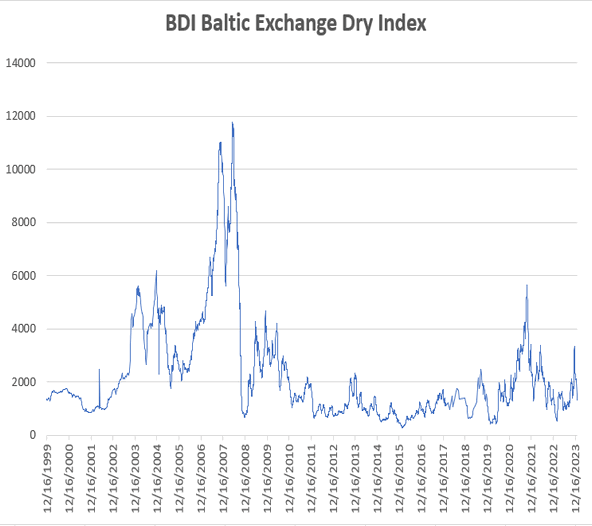Extracted from one of the lectures.
- Massive capital inflows attracted into the region during 1990s because of:
- capital market liberalization in industrialized countries
- Low interest rates in U.S. and Japan
- High economic growth in region
- Financial deregulation in region but not accompanied by adequate supervision (esp in Thailand)
- Pegged nominal exchange rates reduced perceived risks for investors
- Governments encourage foreign borrowings through tax incentives on income earned from foreign exchange loans
- Signs that Crisis was Unpredicted
- Capital flows remain strong through 96 till mid 97 (only exception were equity markets in Thailand and Korea
- Risk premia on loans were low
- Credit rating agencies did not signal risk until onset of crisis itself
- Even Goldman Sachs did not signal a problem
- IMF gave no indication of potential of crisis in region. October 97 WEO even predicted 6% growth for Korea in 1998, 7.4 % for developing Asia
- Stock prices provide the only indication of growing concern. Thai and Seoul markets fell since Jan 1996. Malaysian market began to turn down in March 97, and Indonesian market show continued confidence til mid 97
- Why unpredicted - Sound macroeconomic management
- Budget balance
- Inflation below 10% across region in 90s
- Sovereign debt at prudent levels
- Domestic saving and investment rates were high, implying that even if capital flow slowed robust growth could continue
- CA deficits were large but capital inflows larger so foreign reserves were actually growing across most of the region
- Foreign exchange reserves at end of 1996 were well over four months of imports in each country except for S. Korea (2.8 months). In Thailand, reserves were $38.6 billion at end of 96, equivalent to 7 months of imports.
- World interest rates low so the burden of repaying foreign obligations not onerous
- U.S. economy, a major market for most of Asia’s exports, robust
- Signs of growing vulnerability
- Growing current account deficit
- Overvalued currencies (90‐97(I): real appreciation in all five countries
- Slowing export growth (export growth fell sharply between 96 and 97)
- Rapid expansion of commercial bank credit (much went into real estate markets)
- Growing short term debt (currency mismatches plus loan maturity mismatches)—e.g. Indonesia, Korea and Thailand had ratios of short term debt to foreign reserves exceeding 1.0.
- Triggering Events
- bankruptcy in a decade); followed by Sammi Steel and Kia Motors. They put pressure on banks thro whom foreign borrowings flow through.
- Samprasong Land missed payments in Feb. In next 6 months Bank of Thailand (BOT) lend $6b to distressed financial institutions. BOT also committed half its liquid assets to fight speculators acting against the Baht. Late 97, Thai govt removed support from Finance One (a major financial institution)—this led to withdrawal of foreign funds and prompted currency depreciation July 2. This caused the contagion effect on the rest of Asia.
- Impact of Capital Outflow
- Withdrawal of foreign funds triggered a chain reaction leading to financial panic
- Exchange rate depreciation sparked new withdrawals
- Few firms in Asia hedged their position as they were used to pegged exchange rates.
- Withdrawals set off liquidity squeeze and sharp rise interest rates.
- Sharp fall in stock markets further erode capital base of banks
- IMF's Policy
- Fiscal policy: to tighten in order to support monetary contraction and defend exchange rate and provide funds for injection into financial system
- Bank closures: Thailand financial institutions 58/91, Indonesia closed down 16 banks, Korea 14/30 merchant banks suspended—to send strong signal of government’s intention to reform banking system
- Enforcement of capital adequacy standards
- Tight domestic credit: To raise interest rates to defend exchange rate
- Debt repayment: Full payment of foreign debt obligations, backed by IMF mobilized bail‐out funds
- Non‐financial structural changes: Reducing tariffs, opening up sectors for foreign investment, and reducing monopoly powers
- IMF's Mistakes
- The great speed of bank closures required led to exacerbation of credit freeze in the system
- Tightening the quantity of money trigger a panic by short term creditors who come to doubt the ability and willingness of central bank to provide liquidity.
- The higher interest rate that result did not stabilize the exchange rate but instead cause output contraction, rising unemployment and civil unrest (IMF predicted wrongly that rising interest rate would stabilize the exchange rate and the benefits of that would outweigh the social costs of output contraction)
- Cause
Sudden massive capital outflow was the cause: Net inflow of $92.8b in 1996 to net outflow of $12.1 b in 1997! The $105b turnaround in one year is about 11% of Asian‐5
- And not fundamental flaws in Asian economies such as ’crony capitalism”, widespread corruption, macroeconomic imbalances, weak financial institutions.
- These problems exist but overstated. They have been known for years but yet they have attracted $211 b of capital inflows between 1994 and 1996.
- Speculative capital flow reversal was the result of financial liberalization in 1980s and mismatch of short term foreign loans to long term domestic investments
- On eve of crisis, Asian‐5 had a combined debt to foreign banks of $274b, 64% of which in short term obligations.
- Depreciation of currency increases the cost of debt servicing. Once a currency depreciates, it does not take much to set off panic and rush for exits, especially when central banks do not have a high level of foreign reserves relative the short term debts. Foreign lenders refuse to renew the short term loans and the downward spiral continues.
- Solution
- rollover short term debts into loan term loans
- to have a banker of last resort






Great post! Thank you!
ReplyDelete